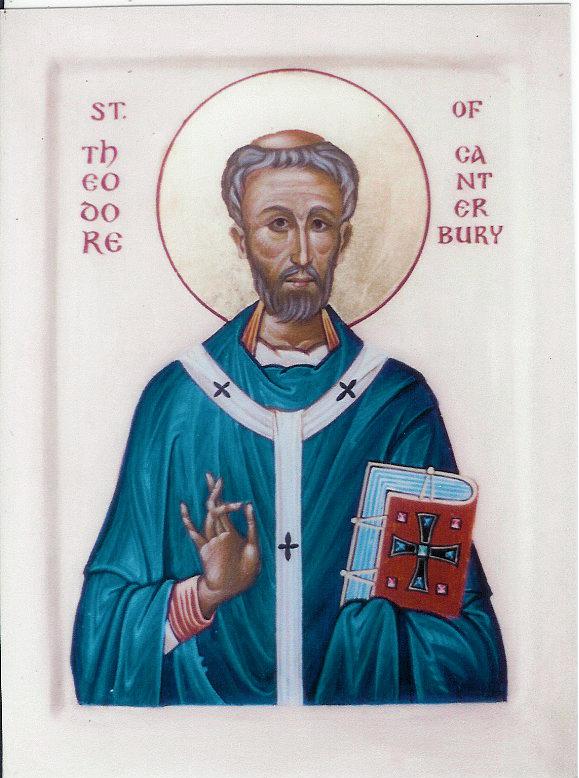The Holy Hierarch Theodore, Archbishop of Canterbury (†690)
A first approach to the indigenous Orthodox Saints and Martyrs of the Ancient Church who lived and who propagated the Faith in the British Isles and Ireland during the first millennium of Christianity and prior to the Great Schism is being attempted in our website in our desire to inform our readers, who may not be aware of the history, the labours or the martyrdom of this host of Orthodox Saints of the original One, Holy, Catholic and Apostolic Church of our Lord.
"The Church in The British Isles will only begin to grow when she begins to venerate her own Saints" (Saint Arsenios of Paros †1877)
|
SAINT THEODORE was the eighth Archbishop of Canterbury (668-690), and one of England's great saints. He was a Greek from Tarsus, the home of the Holy Apostle Paul. He was a highly- educated monk living in Rome who was quickly advanced through all the clerical ranks and consecrated as Archbishop of Canterbury at the age of sixty-five. St Adrian, an African who was the abbot of a monastery near Naples, was sent to assist St Theodore. St Theodore arrived in Kent in 669, when he was almost seventy years old. In spite of his age, he was quite energetic, travelling throughout England, founding churches and consecrating bishops to fill those Sees which were left vacant by an outbreak of plague. He also created new Sees and established a school in Canterbury where Greek was taught. St Theodore summoned a council of the entire English Church at Hertford in 672. Not only was this the first church council in England, it was the first assembly of any kind attended by representatives from all over the country. In 679 he convened another synod at Hatfield to maintain the purity of Orthodox doctrine and to condemn the heresy of Monothelitism. St Theodore fell asleep in the Lord in 690, and his body remained incorrupt for a long time. Under his leadership, the English Church became united in a way that the various tribal kingdoms did not. The diocesan structures which he established continue to serve as the basis for church administration in England. He was respected for his administrative skills, and also for his moral and canonical decisions. The History of the English Church and People of St Bede gives detailed information about St Theodore’s life and work as Archbishop of Canterbury (Books IV and V). The feast of St Theodore is kept on the nineteenth day of September each year.
|
